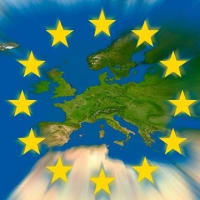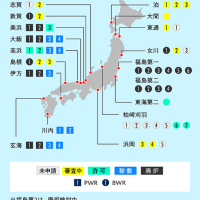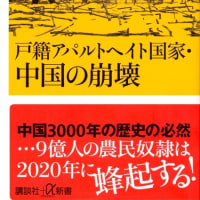12/07/2012 TEPCO. Reuters. NYT.
AND NOW: ‘TEPCO Considers Net In Fukushima Nuke Plant Port To Prevent Irradiated Fish From Heading Seaward’
1
Environment, Global NewsAdd comments
See also:
- Extremely Highly Radioactive Water Flowing Into The Pacific Ocean
- Top Scientist Suspects Radioactive Water Being ‘Actively’ Pumped Into Pacific Ocean (Reuters Video)
- Fukushima Must Be Still Leaking About 300 Billion Becquerels Every Month Into The Pacific Ocean
- NYT: Radiation Levels In Fish Off Japan’s Coast Not Declining – Fukushima Reactor Site Leaking Into Ocean
- TEPCO considers net in nuke plant port to prevent irradiated fish from heading seaward (Asahi, Dec 4, 2012):
Tokyo Electric Power Co. may string nets across its port at the stricken Fukushima No. 1 nuclear power plant to prevent fish contaminated with radiation from reaching the sea.
In surveys conducted through October, greenling caught in the littoral zone of the Otagawa river, about 20 kilometers north of the crippled plant, showed relatively low figures, with 1,350 becquerels per kilogram the maximum. Many greenlings had readings of around 100 becquerels.
But TEPCO also found in the port that species of Conger eel had 15,500 becquerels and other species of fish had 4,200 bequerels, sources said. Conger eels from outside the port posted 100 becquerels or lower.
One hundred becquerels is the standard for common foodstuffs.
At the request of local fishery cooperatives, TEPCO has been studying ways to contain fish in the port.
Sources said the company is considering setting up a 2-kilometer net at the mouth of the port and along the inside of the port’s levees. The measure would be accompanied with dredging of mud in the port.
A similar net was rigged up in 1974 in Minamata Bay to prevent mercury-tainted fish from spreading outside the bay. The net stretched 4.4 kilometers at one point. It was removed after the bay was declared safe in 1997.
At Fukushima, a vast amount of contaminated water that includes radioactive substances has been discharged into the sea since the nuclear disaster triggered by the March 11, 2011, Great East Japan Earthquake and tsunami.
“We have been asking TEPCO to close the port after receiving data showing high levels of contamination,” said an official at a local fisheries cooperative. “There are openable nets that will allow dredgers to enter. TEPCO’s response is too slow.”
Tags: Environment, Fish, Fukushima, Global News, Health, Japan, Nuclear, Nuclear reactors, Radiation, TEPCO
12/07/2012
東電。
ロイター。
NYT。
さて:
『東電は、放射能に汚染された魚が太平洋に泳ぎ出すのを防ぐために、福島第一原発ポートでネットを考慮しています』
環境、Global NewsAddコメント
ref.:
- 太平洋内に流入している極端に高い放射能を帯びた水
- 最高の科学者は、太平洋(ロイター・ビデオ)に『活発に』ポンプで入れられている放射能汚染水を疑います
- 福島は、毎月、まだ太平洋におよそ3000億ベクレルをダダ漏れさせている。
- NYT:
日本の海岸沖の魚の放射線濃度は 落ちていない。– 海に漏れている福島原子炉サイト
- 放射能汚染を受けた魚に対して福島第一原発ポートに防護ネットを考慮します:朝日、2012年12月4日
東京電力は、放射能で汚染される魚を海に到着することから防ぐために、傷ついた福島第一原発ポートに、防護ネットをひもで吊すかもしれません。
10月を通して実行された調査において、オオタガワ川の沿岸地帯に引っかかるアイナメは、麻痺している原発の20キロメートルの北について、比較的低い最大限を1キログラムにつき350ベクレル示しました。
多くのアイナメは、およそ100ベクレルであった。
しかし、コンガー・ウナギの種が15、500ベクレルであった、そして、魚の他の種が4,200bequerelsであった。
港の外でからのアナゴは、100ベクレルを示した。
100ベクレルは、一般の食品のための基準です。
地元の漁業協同組合の依頼により、東電は、港内で魚の汚染を研究している。
同社が港の口で、そして、港のレセプションの内部に沿って2キロメートルのネットをセットアップすることを検討していると、ソースは発表した。
その処置は、港内で泥を浚渫機でさらうことを伴います。
類似したネットは、水銀に汚染された魚が湾の外で広がるのを防ぐために、水俣湾で1974年に間に合わせに作られました。
ネットは、あるところで4.4キロメートルを広げました。
湾が1997年に安全であると宣言されたあと、それは取り除かれました。
福島で、核災害が2011年3月11日、東日本大地震と津波によって起動した時から、放射性物質を含む膨大な量の汚染された水は海に放出されました。
「我々は、東電に汚染の高水準を示しているデータを受けた後に港を閉鎖するよう依頼していました」と、地元の漁場協同組合の当局者は言いました。
「浚渫作業員が入ることができる開けられるネットが、あります。
東電の反応は、あまりにも遅いですね。」
タグ:
環境、魚、福島、世界的なニュース、健康、日本、核、核原子炉、放射線、東電




















※コメント投稿者のブログIDはブログ作成者のみに通知されます